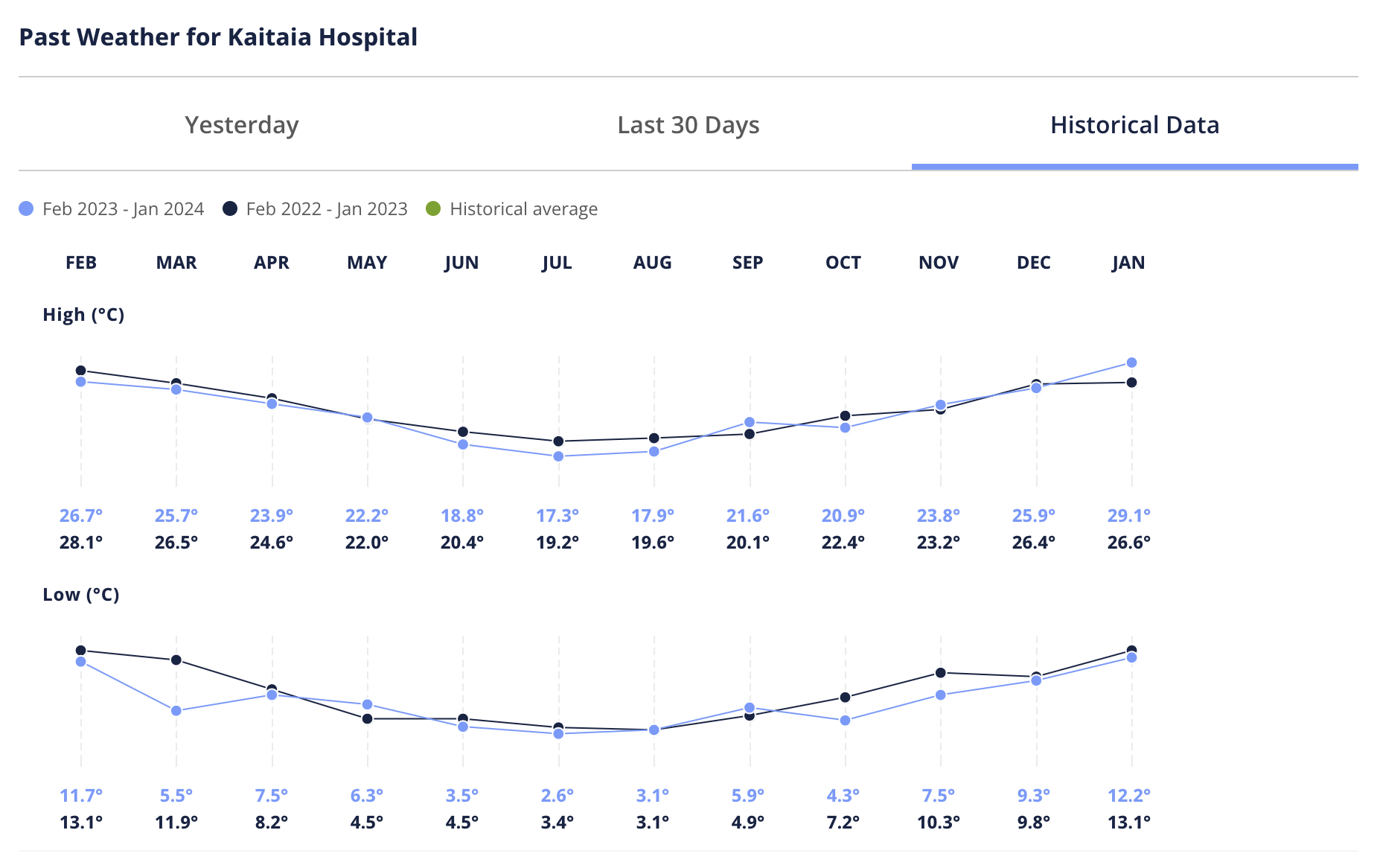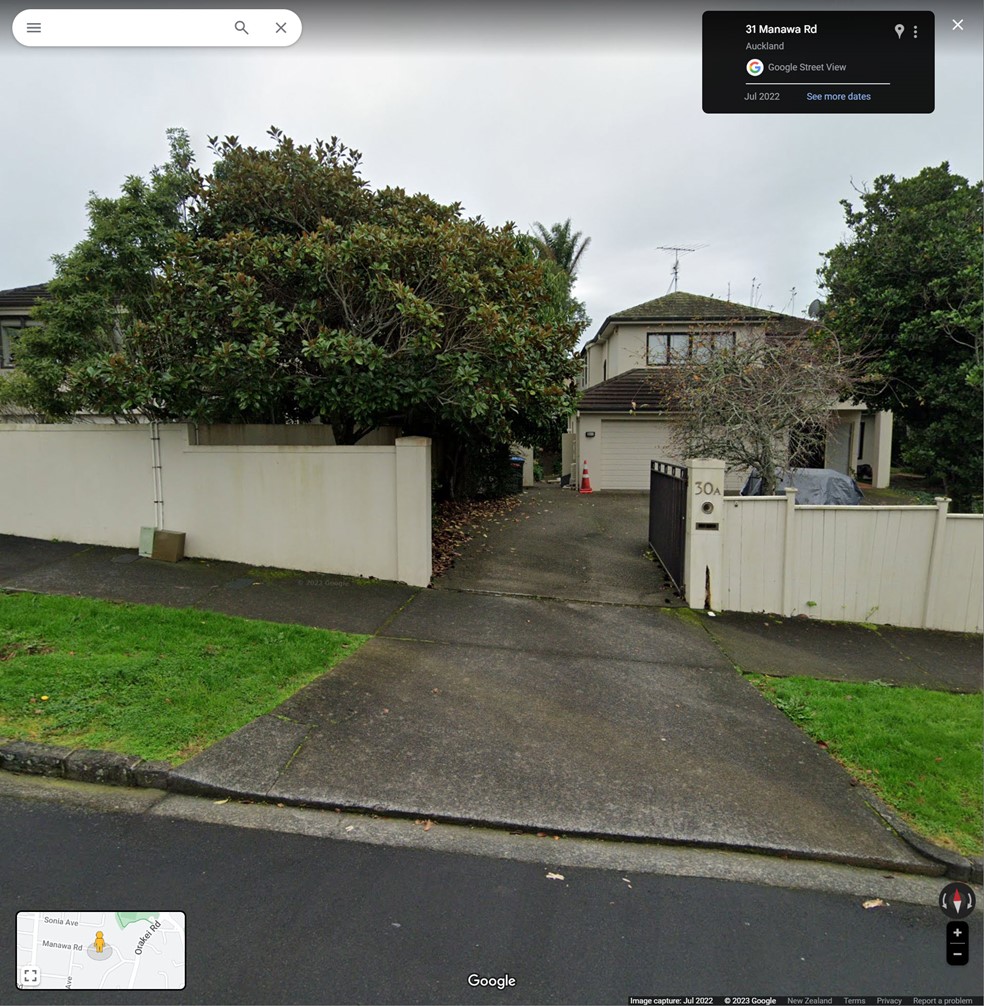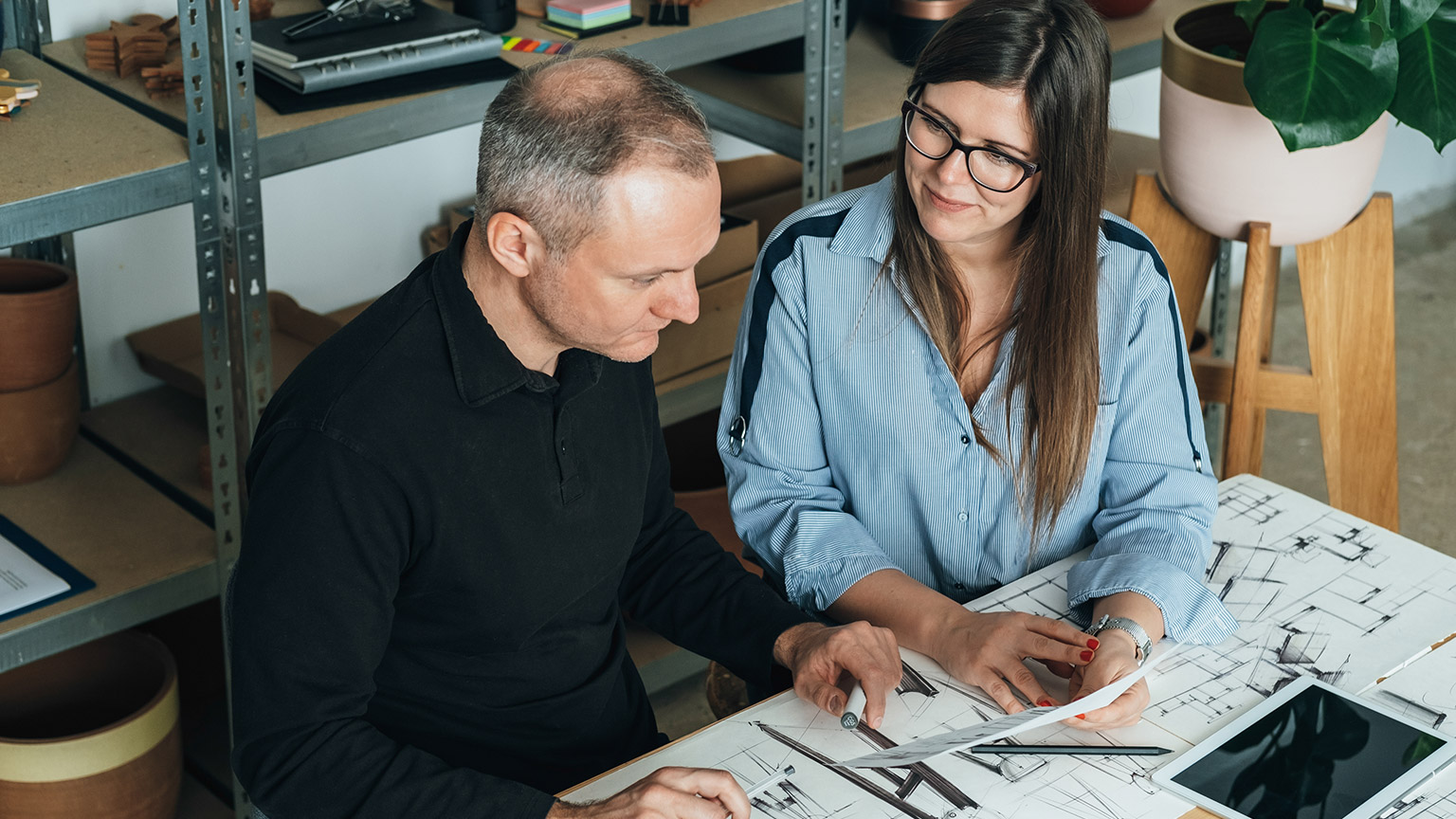In this topic, we’ll look at what a client brief is and how to work out what the client needs from the garden design that you’re going to produce.
By the end of this topic, you’ll be able to:
- Describe the purpose of a client brief.
- List a range of interviewing techniques suitable for client interviews.
- Interview a client and take notes.
A client brief is a written agreement between you and the client that outlines what is going to be done, without committing to a particular design solution.
It covers broader ideas, such as the function of the outdoor spaces rather than how those spaces will look.
The brief gives your client confidence that you are on the same page as them, and that you are capable of meeting their needs as discussed with you during the interview.
A client brief will usually include the designer’s terms and conditions, such as the cost of the design work and how and when it needs to be paid. However, this programme is not about how to run a landscaping business, so we won’t be getting into quoting for work.
Most of the information you include in your client brief will come from your interview with the client, however, there may be things that the client hasn’t considered that may influence the design.
It’s a good idea to do a little bit of background research before you meet with the client. When we get to looking at site analysis, we’ll dig into the legal considerations of garden design and construction, so for now what we’re interested in is how the site fits into the wider area.
Climate of the town or city and region
Additionally, it’s important to have a fair idea of the climate at the site. If the property is near you, you probably already know:
- if frosts occur during the winter months
- the average high and low temperatures by season
- how often it rains.
If you don’t, research the climate online. You’ll probably be able to find a good summary on Wikipedia or look at historical records on the MetService website.


Street and neighbourhood
If the property is nearby, it may pay to visit the site before the interview. Don’t go onto the property but drive, ride, or walk past it and try to get a feel for the neighbourhood. If there is somewhere safe to stop near the property do so and take note of any views – desirable or undesirable – that may be seen from the property.
Also take note of where north is. If you’re not sure where north is, use a compass or the compass app on your phone. Make sure your compass/phone is set to true north – points to the geographic north pole – rather than magnetic north – points to the magnetic north pole. The difference between the two is roughly 20 degrees, depending on where in Aotearoa you live, so it’s important to get the right bearing.
If you’re not sure, look it up online. For example, the Compass app on iPhone can be set to either magnetic north or true north by changing it in the Settings app. Good-quality physical compasses usually have a small screw on them to offset the difference (which is called magnetic declination).
If it’s not so easy to get to the site, use Google Maps to get a sense for these considerations. Turn on the satellite layer and zoom in from a regional view to the section or street level. You might also find it useful to use Google Street View by dragging the person icon in the bottom right corner of Google Maps and dropping them on the street outside the property you’re interested in.
Drag the view to rotate around your current location. Click further up the street to move there. Make sure you identify the property correctly, by checking the address on the letterbox or fence, if possible.
Click the X in the top right corner to go back to the map.

The site
It’s a good idea to have a look at the site on Google Maps too – whether you’ve stopped outside the site or not – to get a sense of the size and shape of the property itself. Use the satellite view in Google Maps and zoom right in on the property. Hopefully you’ll be able to make out the house, other site buildings, boundary fences and trees.
Note that the imagery used on Google Maps can be several years old. This research is intended to help you form a mental picture of the site but be prepared to change your mind when you go to visit the client and find that the site has been subdivided or an extension has been added to the house!
Having an appreciation of the regional and local environment that the site sits within will help you during your interview, as you’ll be able to comment on the views and climate and ask follow-up questions.

Before you write up your client brief, you need to interview your client.
The purpose of this interview is not to seek their thoughts on specific details like garden styles or specific plants they like, but to help them explore what they want out of the design. In other words, we want them to define the problems their garden currently has.
You will use the information you gather in the interview to inform your design decisions in later stages, so it is important you ask lots of questions and actively listen to your client. Write notes during the interview so that you can refer to them later to refresh your memory of what was said. Alternatively, you could use a voice memo app on your phone, but if you do this, make sure you get their permission first.
Questions you may wish to ask include (more are provided in the template that follows):
- “Who lives here?”
- For children or grandchildren, you may want to ask their ages.
- “Do you have any pets?”
- “How do you want to use the space?”
- Usually, the client will want the garden to be used for a number of different things. We treat these as different spaces in our design, e.g., an outdoor lounge, a play space for kids, a BBQ area.
- For each of the functions they described, work out how the space should make the client feel.
- This doesn’t mean you need to specifically ask “how should this space make you feel?”.
- Instead ask for examples of the ideal space in use. For instance, “You’ve mentioned that you want a BBQ area; what does a typical evening BBQ look like for you? Lots of people or just a few? Does it go late into the night or finish when the sun goes down? Do you plan on only barbecuing in summer or year round?”
- From this you should be able to decide if this needs to be a cosy, intimate space for quiet conversation with whānau and a few friends or a space for a large group of people to listen to music and have a yarn into the small hours of the morning.
- “Who else will be using the space?”
- “Are there any access or safety considerations we need to take into account, such as wheelchair or pram access, or waterways that may need fencing?”
- “Do you enjoy gardening?”
- “How much time do you want to spend working in your garden?”
- “Are you aware of any restrictions that apply to this site, such as covenants?”
A covenant is a rule that applies to a property and how it can be used. Covenants are recorded on the certificate of title (CT), which is the legal record of property ownership in Aotearoa. A covenant may specify, for instance, the type of fencing that must be used on the boundaries, whether small buildings can be constructed on the property, or maintenance requirements for vegetation (Nelson, no date).
You might like to use this garden design interview template: Garden design interview template.
For this programme, design fees and the client budget are out of scope, so these have been deliberately left out of the template.
If you plan to have a career in the industry, it will be beneficial for you to take note of material costs as you work through this programme. This will help when you start to quote jobs in the future.
Ask open-ended questions
While many of the questions above are closed questions (ones that have either a ‘yes’ or ‘no’ answer), they can be useful starting points. For example, if you ask, “Do you enjoy gardening?” and the client answers, “Yes”, you can follow it up with other questions, like “What do you enjoy growing?”
If your client mentions a garden style they particularly like, don’t assume that this will be the style you end up designing. Additionally, what they think of as a certain style, like an “English garden”, might be different to your mental picture of what an English garden is. Instead, ask them what they like about that particular style and take note of their answer.
If possible, ask your client to walk you through their garden. This will not only ensure you are on the same page but also provide an opportunity for them to impart their knowledge of the existing features – for example, areas with poor drainage.
Be empathetic
When designing for a client, it is important you are empathetic. If you can put yourself in their shoes, imagine how they currently feel, and how they would like to feel in the space you are designing, then your proposal is more likely to be a success. For instance, if they are elderly, make a note to ensure that all paths and hard surfaces are level and stable; stay away from pavers surrounded by gravel.
Watch the following video about the design thinking process. Throughout this programme, we’ll be following a design thinking approach, and this video gives a good introduction. It also highlights the importance of understanding the user experience.
Watch: What is Design Thinking (2:18 minutes)
When you go to a hardware store to buy a drill, what do you want? Is it the drill or the hole the drill will create? Customers remember the outcome and experience created by a business. Design thinking is a person-centred approach to designing outcomes and experiences to delight the customer. This video summarises the five key steps in achieving the right outcome and positive experiences for customers through design strategy.
Pre-Watch question
Consider the ways that design thinking focuses on customer needs.
Post-watch task
In your notebook or piece of paper, write down a landscaping example of design thinking.
Be courteous and professional
Your client has asked you to help them with their garden because they want a professional, so treat them with courtesy and respect and do what you say you will.
Activity - Professional behaviours
In your notes or on a scrap piece of paper, list three positive things you could do to be professional for your client and three things you should avoid doing (negative behaviours).
Once you've done that, categorise our examples in the following activity.

Active listening is an essential tool when interviewing your client.
Passive listening is when you hear the person’s words, but don’t necessarily understand the meaning or emotions behind them. Active listening helps you to make sure you fully understand what the speaker is saying and gives insight into how they feel about the topic.
A key element to active listening is using open-ended questions. Ask open-ended questions during your interview to get as much detail from your client as possible. You want to encourage them to talk so that you can learn as much as possible about what they want. Show you are listening by using eye contact, nodding, and not interrupting.
At several points in the interview, check in with the client to make sure you are understanding them correctly. Put in your own words what you think they are saying and allow them to confirm or correct you.
At the end of the interview, summarise what you have discussed throughout and let them know what will happen next in the design process (you will be writing up a client brief). Where possible, focus on the problem statements, such as “you want a design that blocks out the view of your neighbour’s garage to the south, includes secure, off street parking for your cargo bike, and highlights to visitors where the front door is”.
Watch: The Art of Active Listening | The Harvard Business Review Guide (7:38 minutes)
You might think you’re a good listener, but common behaviors like nodding and saying “mm-hmm” can actually leave the speaker feeling unheard or dismissed. The truth is that mastering the art of listening involves a whole host of other skills as well. You need to do more.
Pre-watch question
Do you think you are a good listener?
Post-watch task
Did Amy’s advice ring true for you? What’s one question that she suggested that you plan on using when listening to others?
Let’s take a moment to remind ourselves what we’ve covered so far in this topic.
Throughout this programme, we’ll be following the design and construction of a garden for a client, Genevieve.
Watch: Client Interview (11:16 minutes)
Landscape designer Chris interviews Genevieve about what she wants from her new garden. This will form the basis for the client brief.
Pre-watch question
Watch the video once from start to finish and make notes of the key points as you go, then answer the questions below to see how well you followed the conversation. Keep these notes handy as you’ll need them in the next topic.
Post-watch task
Are there any other follow-up questions that you would have asked Genevieve?
A client interview will usually take longer than this, but we’ve made an effort to cover most of the key questions in a short period of time for this programme.
We’ve reached the end of this topic on determining the client’s requirements. By now, you should:
- be clear on the purpose of a client brief
- know how to do basic research about the site
- be ready to interview a client and take notes.
Next, we’ll look at the client brief itself.
